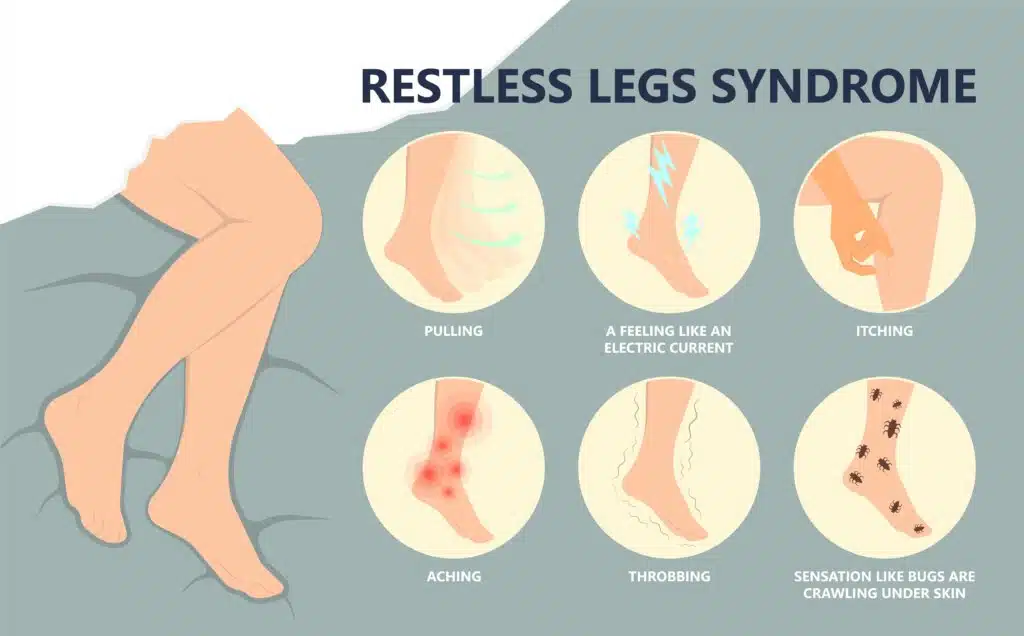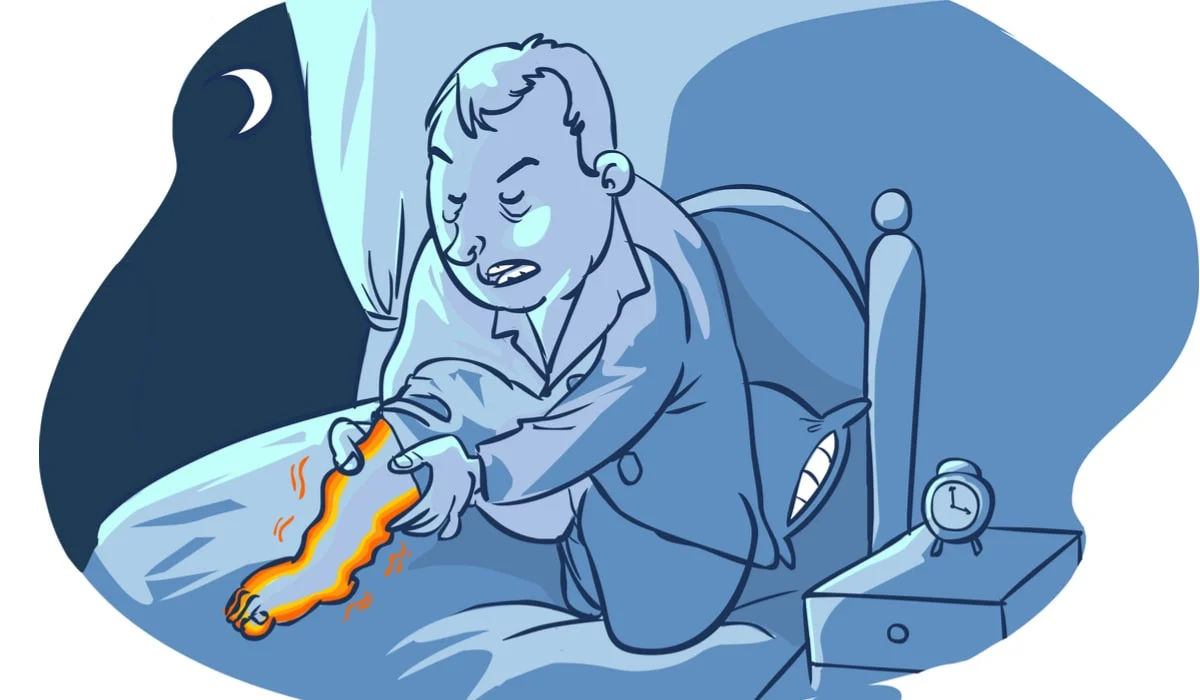Living with Restless Legs Syndrome (RLS) has been one of the most exhausting, frustrating challenges of my life. For over twenty years, I’ve battled this condition every night, feeling like my own body was betraying me. It’s not just the physical restlessness but the emotional toll of RLS that has truly worn me down. Every night, when I lie down hoping to sleep, I find my legs are wide awake. They twitch, jerk, and feel an unrelenting need to move. My body is exhausted, my mind is begging for rest, yet this strange compulsion seems to have its own agenda.
I used to feel like I was the only one dealing with this nightmare. Over the years, I’ve tried everything to find relief: lunging in airplane aisles, pacing through late-night meetings, and even punching my legs in the middle of a crowded movie theater. On some of my darkest nights, I’ve cried alone, feeling isolated, exhausted, and misunderstood. Like many with RLS, I experienced doctors dismissing my symptoms, telling me it was all in my head or just a “minor inconvenience.”
It took years of frustration, doctor visits, and endless nights without sleep to finally get a concrete diagnosis: restless legs syndrome. Understanding RLS has been a journey, but it’s also helped me discover ways to cope, and that’s what I hope to share with anyone who may be going through the same struggle.
Understanding RLS: The Physical and Emotional Toll
When I first started sharing my experiences with others, I discovered that I was far from alone. Many people live with RLS but suffer in silence, often because they feel they won’t be taken seriously. I was stunned to learn that RLS affects 7-8% of adults, yet so few of us receive proper care. People who experience RLS describe a range of sensations: itching, burning, crawling, tingling, and sometimes even outright pain. Moving the legs is the only way to find temporary relief, and because symptoms intensify at night, sleep becomes elusive. Over time, this lack of rest has serious implications—not just physically, but also emotionally and mentally.
Studies show that people with Restless Legs Syndrome are nearly four times more likely to suffer from depression or suicidal thoughts than those without it. This statistic didn’t surprise me. Dealing with RLS night after night is an isolating experience, especially when people around you don’t understand the severity of what seems like “just a fidget.” But RLS isn’t “just a fidget”; it’s a neurological condition, and it deserves to be taken seriously.

The Long Road to Diagnosis and the Stigma Around RLS
For years, I bounced from doctor to doctor, with each one offering a different opinion. Some dismissed it entirely, chalking it up to stress or anxiety. Others focused on my other health conditions, believing RLS was too trivial to discuss. I later found out that sleep disorders, including RLS, are often left out of medical school curricula. Many doctors don’t have the training to diagnose or treat RLS effectively, which can make getting help feel like an uphill battle.
It wasn’t until I met a specialist who truly understood RLS that I finally felt validated. I encourage anyone experiencing similar symptoms to push for answers. If your doctor doesn’t seem to understand, find someone who does. Advocating for yourself may feel daunting, but it’s the most powerful tool you have. RLS is a genuine medical condition, and you deserve support.
My Advice for Managing RLS
Managing RLS is an ongoing process, and what works can vary from person to person. Over the years, I’ve gathered insights and practical advice that have helped me cope, and I hope they can offer some relief to others too.
1. Identify and Avoid Triggers
RLS is often exacerbated by certain substances and habits. For instance, caffeine, nicotine, and alcohol are known to intensify RLS symptoms. I had to learn to adjust my coffee intake and be cautious about evening alcohol. Experimenting with these changes can be challenging, but avoiding triggers may provide significant relief.
2. Experiment with Exercise
Finding the right balance with exercise can be tricky, as both too little and too much physical activity can aggravate symptoms. I find that moderate exercise, like walking or gentle stretching, helps calm my legs in the evening. On particularly bad nights, a few lunges or stretches can ease the restlessness enough to let me lie down. However, too much exercise, especially later in the day, sometimes makes my RLS worse, so I try to stick to a balanced routine.
3. Maintain a Consistent Sleep Schedule
Establishing a bedtime routine has been a lifesaver. I try to go to bed and wake up at the same time every day, which seems to help reduce my symptoms. Sleep hygiene—like keeping the bedroom dark and quiet—also helps, even though it doesn’t cure RLS. Consistent sleep habits can ease the frustration of trying to settle into sleep when your legs won’t cooperate.

4. Explore Supplements and Medications with Caution
There’s no one-size-fits-all solution, but there are some supplements that may help alleviate Restless Legs Syndrome symptoms. Magnesium and iron supplements are common options, though research on their effectiveness is mixed. Working with a doctor, I explored gabapentin, which can be helpful for RLS symptoms, though I’ve learned it’s crucial to stay in close communication with your healthcare provider when trying medications.
In recent years, certain medications previously prescribed for RLS, like dopamine agonists, have become less recommended due to side effects and worsening symptoms over time. Make sure to discuss all treatment options and potential side effects with a doctor who understands the latest research on RLS.
5. Consider Emerging Treatments
One of the newest treatment options that has shown promise is a device called the Nidra, which stimulates the peroneal nerve to simulate leg movement. This device is still not widely available, but the idea of non-invasive treatments brings hope to many of us in the RLS community. Always stay updated on emerging treatments, as there’s ongoing research dedicated to finding better solutions.
Finding Community and Support
One of the best decisions I made was seeking out a support network. Whether through online communities or support groups, connecting with others who understand your struggles can make a world of difference. Many of us with RLS have spent years feeling like outsiders, and hearing from people who “get it” is a huge relief. It can also be a great source of practical advice—though I’d caution you to approach every suggestion with a healthy dose of skepticism (no, a bar of soap under your sheets won’t fix RLS).
Advocating for Change
Change in the way RLS is understood won’t happen overnight, but awareness is growing. Recently, organizations like the Restless Legs Syndrome Foundation have advocated for better education among healthcare providers, and some new guidelines are improving the treatment landscape. My journey has taught me that advocating for yourself—and for better understanding within the medical community—is essential. Don’t settle for dismissive answers, and don’t let anyone tell you that RLS isn’t real or isn’t worth treating.
Final Thoughts
Living with RLS is a daily struggle, but it doesn’t have to be a solitary one. Seek help, try different coping strategies, and above all, trust that your experience is valid. If you’re dealing with similar symptoms, know that you’re not alone, and relief is possible. Each night may bring its challenges, but with a combination of knowledge, self-advocacy, and support, you can reclaim the rest and peace you deserve.




